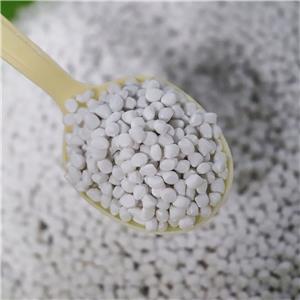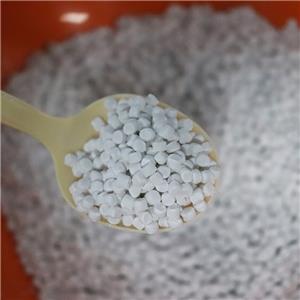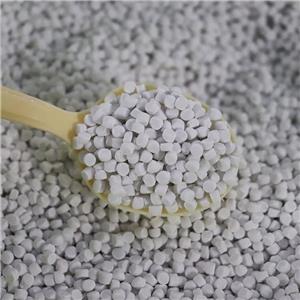Application of Talc and Calcium Carbonate in Degradable Plastics
In recent years, China's packaging plastic about 4 million T, of which it is difficult to recycle disposable plastic packaging accounted for about 30%, the annual plastic packaging waste of about 1.2 million T; plastic film more than 400,000 T, due to the thin (8 μm or less), after the use of broken in the farmland and mixed with a large number of sand, it is difficult to recycle; difficult to recycle disposable miscellaneous daily-use products and should not be recycled. About 400,000T of medical supplies are difficult to recycle.
As soon as the "Plastic Restriction Order" was issued, various places responded by actively exploring and researching new materials that can be degraded in the natural environment, among which biodegradable plastics are the most sought-after. According to the source of raw materials, biodegradable plastics can be divided into petroleum-based and bio-based. Petroleum-based biodegradable plastics mainly include: polybutylene succinate (PBS), polybutylene adipate/terephthalate (PBAT), polyglycolic acid (PGA), and polycaprolactone (PCL), etc. Bio-based biodegradable plastics mainly include: polylactic acid (PLA), starch, and cellulose.
Starch and cellulose are commonly chosen as fillers for biodegradable plastics currently on the market due to considerations of material degradability, cost and other factors. Composite of starch and polymer materials can be made into degradable materials. Generally, starch or its derivatives are added to synthetic polymers as additives to improve the biodegradability of synthetic polymers. Material degradation, due to starch degradation and the remaining porous polymer, easy to further - oxidation and other degradation reactions. However, starch, cellulose and resin compatibility is poor, temperature resistance is insufficient, and the cost is high, is not suitable for a large number of filling.

Our main talc, calcium carbonate and other non-metallic mineral powders, low price, environmentally friendly, sufficient raw materials, high fineness, whiteness, easy to match the colour, can improve the dimensional stability of plastic products, temperature resistance, rigidity, and to improve the processing performance of plastics and so on.
Talc added to biodegradable plastics can increase the material's rigidity, heat distortion temperature, dimensional stability, surface hardness, etc.; at the same time, ultrafine talc can also be used as an inorganic nucleating agent for polylactic acid (PLA), adding the right amount of ultrafine talc can improve the crystallinity of PLA and the rate of crystallisation, and greatly improve its mechanical properties.
Talc in PLA modification has three major roles:
1: cost reduction: talc-filled PLA composite material preparation method, to provide a beautiful appearance, good rigidity, short product moulding cycle, lightweight and inexpensive heat-resistant PLA composite material preparation technology and method.
2: Improve the strength: natural talcum powder for melt blending, the composite material is a completely biodegradable material; has excellent mechanical properties, of which the tensile strength can reach 50 ~ 70MPa.
3: Improve heat resistance: PLA has better heat resistance due to its own crystallisation and the nucleating agent talc to promote crystallisation.
Calcium carbonate filled with biodegradable plastics can accelerate the degradation of biodegradable plastics, at the same time, calcium carbonate can be used directly by certain inorganic nutritive microorganisms as a carbon source, and the organic acid produced by microorganisms when they are active in the soil, as well as the nitric acid and sulphuric acid produced by nitrifying and sulphidising bacteria can further improve the solubility of calcium carbonate.
The role of calcium carbonate in biodegradable plastics:
1. Promote degradation: Calcium carbonate particles increase the distance between resin molecules, reduce the force of macromolecular chain segments, impede the re-cross-linking of macromolecular free radicals, promote the free radical chain-breaking reaction triggered by photodegradation, and accelerate the degradation of biodegradable plastics.
2. Easy to decompose: buried in a humid environment, calcium carbonate can be chemically dissolved, and it is directly used by some inorganic nutritive microorganisms as a carbon source.
3. Reduce viscosity and improve fluidity: Calcium carbonate after surface treatment improves the viscosity of degraded plastics, improves the fluidity of materials and reduces energy consumption.
Traditional disposable non-degradable plastic products have been widely used in takeaway, e-commerce and other emerging industries, but the follow-up treatment is more complicated, which limits its development, therefore, the development and innovation of biodegradable plastic production and processing technology puts forward higher requirements. Biodegradable plastics market demand space, in the face of this vast market in the future, Xufeng Powder as a provider of solutions to provide suppliers, in the future research, according to the biodegradation market demand, in-depth study of suitable inorganic non-metallic powders applications, the existing talcum powder, modified talcum powder, calcium carbonate (heavy calcium, functional calcium, ceramic white calcium), the product has been in line with the FDA food certification qualification, and would like to be in the industry of biodegradable plastics with the We hope to establish long-term and effective communication and cooperation with the biodegradable plastics industry to seek common development and achieve the purpose of improving the degradability of biodegradable plastics, as well as join hands to create the development of the biodegradable plastics industry to achieve the green and sustainable generation of a friendly environment to make a contribution.




